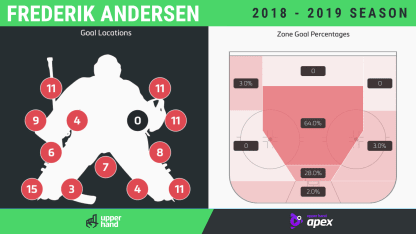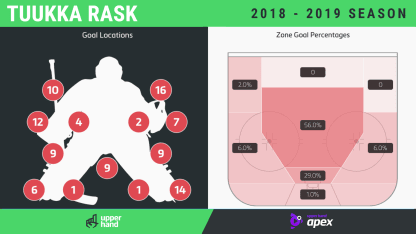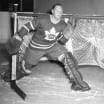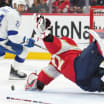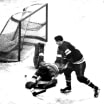Rotation in zone, flat off the rush: Rask has done a good job of improving his lateral movement on end-zone play through his career, taking some of the open-and-close delays out of his side-to-side movements, including a tendency to back into plays to his right. Last season he got caught sliding across on his knees on lateral plays he used to beat on his skates. That wasn't as noticeable this season. He still is prone to his old backward flow patterns off the rush, including a tendency to retreat parallel to the goal line, which can leave him off angle on plays down the wing and accounted for some of the increase in clean-shot goals allowed, 23 this season after 14 last season.
Post play: Rask has modernized his post-integration habits during the past couple of seasons, using his back leg more to pivot around and move off his posts from reverse-VH, a technique where he anchors the post with his short-side pad along the ice and keeps the back skate engaged. In doing so, he's at least reduced, though not eliminated, a tendency to go into the posts with the shin of his pad and bump off with a narrow butterfly that limited coverage along the ice. His goal totals on low-high plays were up to 16 this season from 12 last season, but still down from 21 two seasons ago, when his post play was more predictable. Toronto beat him three times in reverse-VH last year, including two over the shoulder on the short side, a spot that can be targeted when he drops into reverse-VH with the puck near the bottom of the face-off circle.
Stretch him out: Rask's goals allowed on lateral plays across the slot line were down from 50 last season to 34 this season, but without shot totals and a save percentage for these types of plays it's hard to tell how much of that was based on the quantity of those chances he faced. He still tends to start outside his posts on rush chances, increasing the distance to cover on cross-ice passing plays, and the Maple Leafs successfully pulled him wide during the playoffs last season, which tends to leave him extended, off balance and falling forward rather than pushing across.

